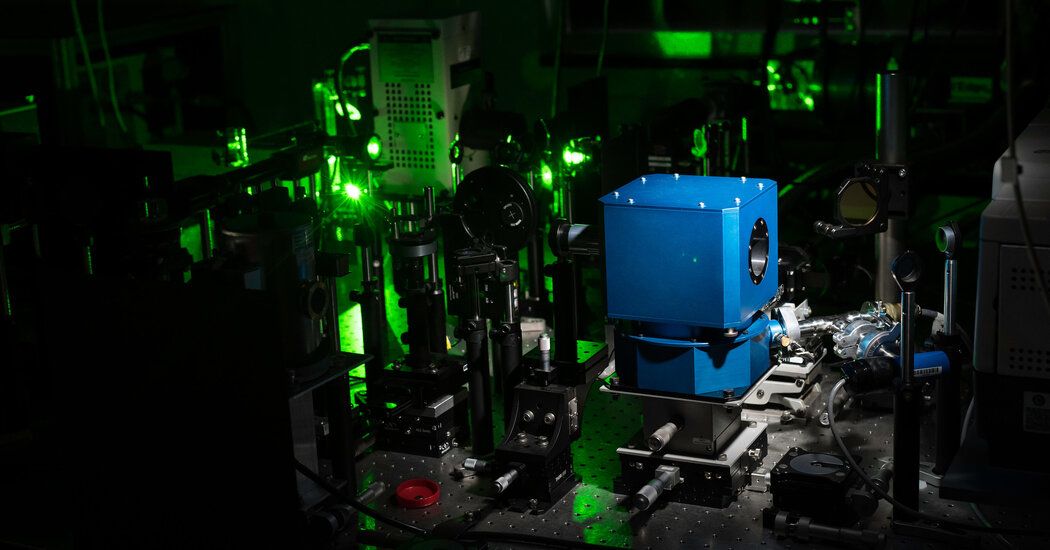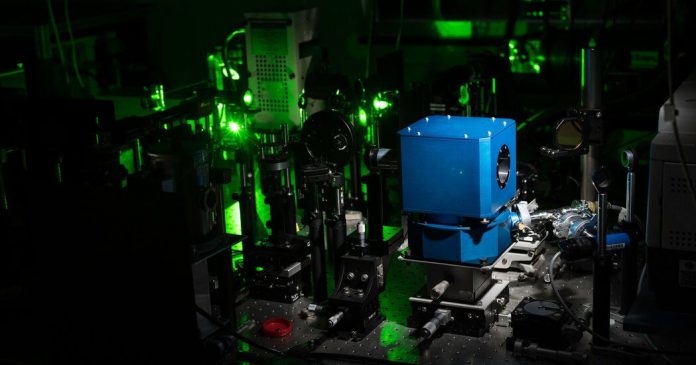
For decades, physicists have dreamed of discovering a material that could effortlessly convey electricity at everyday temperatures, a feat that would save gargantuan amounts of energy and revolutionize modern technology.
Writing in the journal Nature, a team of researchers announced on Wednesday that they have done just that. They have made a superconductor that works at 58 degrees Fahrenheit, the temperature of a cool autumn day.
This material is still far from practical, produced in only minute quantities and under immense pressures usually found closer to the Earth’s core. But the scientists hope that with further experimentation they can devise a variation of their material that remains a superconductor even after that pressure is removed.
“Ultimately, we want to bring the pressure to almost ambient pressure, to actually have an actual application,” said Ranga P. Dias, a professor of physics and mechanical engineering at the University of Rochester and the senior author of the Nature paper.
Shanti Deemyad, a professor of physics at the University of Utah who was not involved with the research, said, “It’s a very robust study, very beautifully done.”
The first superconductors observed by scientists lost their electrical resistance only at ultracold temperatures, a few degrees above absolute zero, or minus 459.67 degrees, the lowest possible temperature. In the 1980s, physicists discovered so-called high-temperature superconductors, but even those became superconducting at temperatures far more frigid than those encountered in everyday life.
The latest research is an outgrowth of predictions decades ago that hydrogen, the lightest of elements, turns into a metal and then a superconductor, possibly at room temperatures, when sufficiently squeezed. But pure hydrogen is difficult to work with.
Three years ago, Dr. Dias, then a postdoctoral researcher at Harvard, and Isaac Silvera, a Harvard physics professor, reported that they had produced the long sought metallic form of hydrogen.
That claim, not yet reproduced, is still viewed skeptically by many.
Scientists also started looking at hydrogen mixed in with another element. The bonds between the atoms of the other element might help compress the hydrogen together.
In 2015, Mikhail Eremets, a physicist at the Max Planck Institute for Chemistry in Mainz, Germany, reported that hydrogen sulfide — a molecule consisting of two hydrogen atoms and one sulfur atom — turned superconducting at minus 94 degrees Fahrenheit when squeezed to about 22 million pounds per square inch. That was a record warm temperature for a superconductor at the time.
“That’s, I would say, the game-changing paper that sort of set the tone,” Dr. Dias said.
Dr. Eremets and other scientists subsequently discovered that lanthanum hydride — a compound containing hydrogen and lanthanum — reached a superconducting temperature of minus 10 degrees Fahrenheit at ultrahigh pressures.
Dr. Dias’s group looked at a mixture of three elements: hydrogen, sulfur and carbon. With three elements, the scientists were able to adjust the electronic properties to achieve the higher superconducting temperatures.
“You can start with knowing what the good binary systems are and then potentially adding another element to it to get more complex,” said Eva Zurek, a professor of chemistry at the University at Buffalo who performs numerical calculations to predict the behavior of the high-pressure materials. “And hopefully, this complexity can bring the superconducting critical temperature up or stabilization pressure down.”
Dr. Zurek, who was not involved with the latest research, said carbon was a good third element to add because it formed strong bonds that could potentially keep the material together. “If you release the pressure, then those bonds potentially will not break,” she said.
To make the superconductor, the scientists had to squeeze the substance between two diamonds to nearly 40 million pounds per square inch. That is approximately the pressure you’d experience if you could tunnel more than 3,000 miles into the Earth and arrived at the bottom of the molten iron outer core.
The process produced specks of material about the volume of a single inkjet particle.
The experimental results did not fully agree with Dr. Zurek’s computer calculations, which predicted the highest superconducting temperatures at lower pressures. Dr. Dias instead found that the superconducting temperature continued to increase as the pressure rose.
That could mean that the molecular structure of Dr. Dias’s compound is not what Dr. Zurek expected or that the computer simulations left out important phenomena.
The ultrahigh pressures make the current superconductor impractical for applications, but it is possible that a future variation could maintain its structure after the pressure is removed — what scientists call metastable.
Diamonds, for example, are metastable. They remain sparkly for millions or billions of years even though they will eventually fall apart to a black sooty version of carbon that is more stable.
Various techniques could then be employed to produce a metastable compound in quantity. “We may be able to grow this one, just like the diamond being grown in the lab,” Dr. Dias said.
Scientists working in high-pressure physics think there is much still to be found and room-temperature superconductors that work at everyday pressures cannot be ruled out.
“This may be just a tip of the iceberg of a broader set of discoveries,” said Russell J. Hemley, a professor of chemistry and physics at the University of Illinois at Chicago who is among the other scientists who have performed experiments on hydrogen compounds.
“The really interesting question, just fundamentally, is: What is the limit?” Dr. Hemley said. “And what is the mechanism at these very high temperatures? Because that’s really an open question.”





























